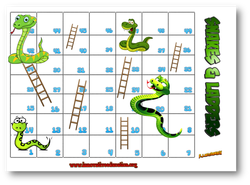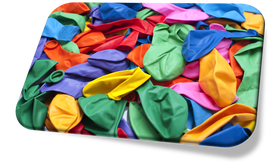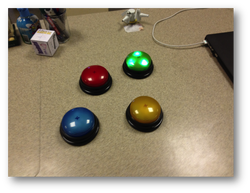
Before the lesson prepare 49 questions on separate pieces of paper (numbered) along with the answer, one for each square on the board. I usually get the students to prepare these during the preceding lessons as an exit task.
In small groups students roll the dice and move forward the number of places shown. In order to stay on this square they have to answer the corresponding question correctly, if they don't they move back to where they came from. The only exception to this is if you land on a snakes head, as this will automatically move them downwards without the need for a question.
The usual snakes and ladders rules apply, land on a ladder, move upwards, land on a snakes head move down.
| Snakes & Ladders Board.pdf |





 RSS Feed
RSS Feed
